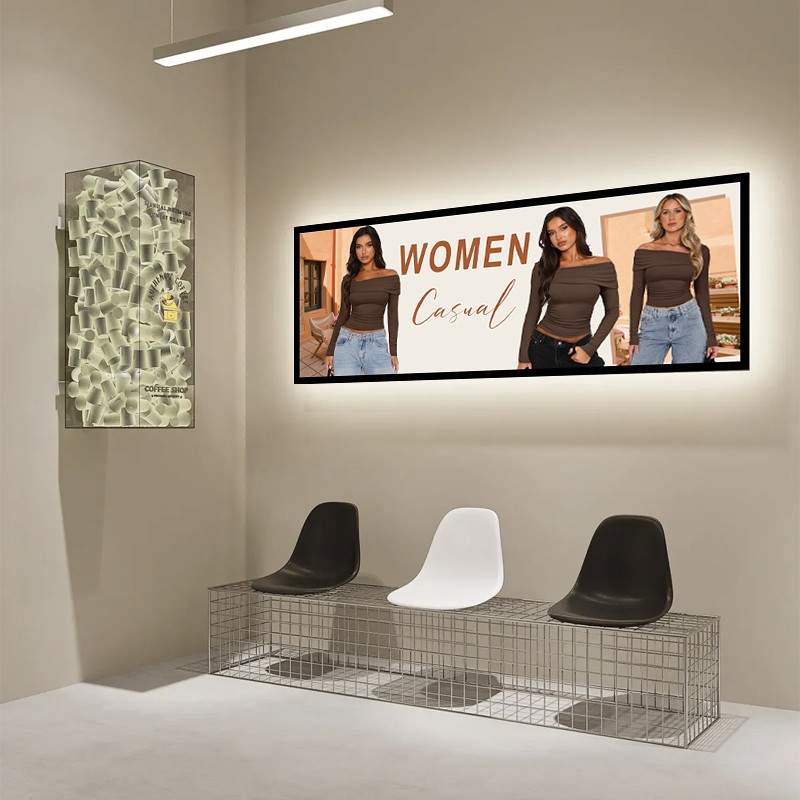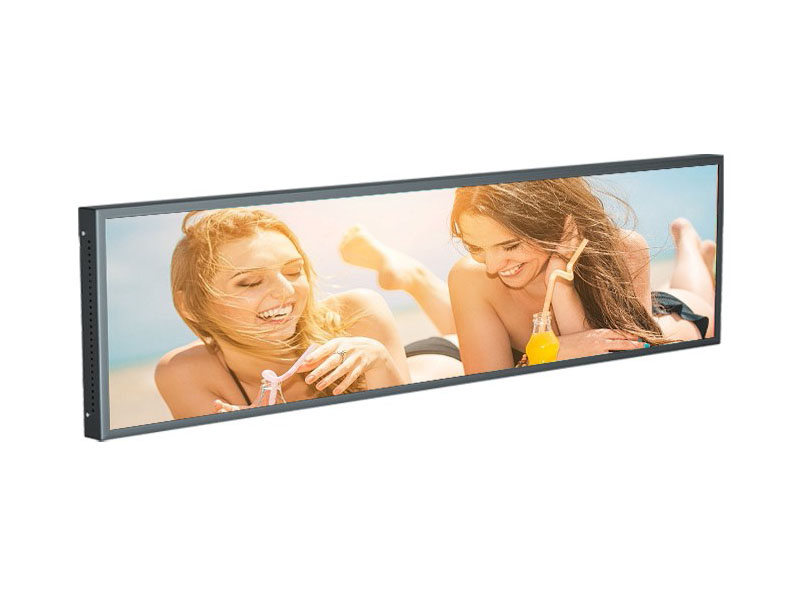In the context of the vigorous development of digital information display, bar type screens, as important carriers for efficient information dissemination, have been widely integrated into numerous fields such as intelligent transportation, commercial retail, public services, and advertising media. From intelligent traffic guidance in bustling cities to product promotion displays in shopping malls, and information (public announcements) in public service venues like hospitals and banks, bar screens are ubiquitous, highlighting their self-evident importance. As market demands become increasingly diversified, the bar screen market has derived products from two different production sources: original and cut. Today, we will deeply explore their respective advantages, which is crucial for market participants to make reasonable product choices.
I. Overview of Bar Type Screens:
Definition and Characteristics
A bar screen is a long-strip liquid crystal display (LCD) with an aspect ratio greater than that of ordinary monitors. Common resolutions include 1920×360, 1920×240, 1920×540, and 1920×560.
Diverse sizes adapt to different installation spaces.Clear display effectively conveys information. Rich functions can integrate with information publishing systems to achieve split-screen and time-sharing playback.
Application Scenarios for bar type display
Transportation: As station announcement screens in subways and buses to display arrival information; for flight and train schedule guidance in airports and railway stations.
Commercial Retail: For product display and promotional information in shopping malls and supermarkets; to showcase brand images and new product launches in exclusive stores and counters.
Public Services: For financial information display and queuing in banks; for registration information, department distribution, and doctor scheduling in hospitals.
Advertising Media: With features like high definition, brightness, and vivid colors, it perfectly combines images, videos, text, and sound, serving as a powerful tool for advertising.

II. Difference Comparison Between Bar Screens and Cut Bar Screens
1- Production Process
Original Bar Screen: Manufactured through original factory photolithography production, following a strict standardized system. Each link, from liquid crystal glass selection and manufacturing processes to final product assembly, adheres to fixed parameters and quality control standards, ensuring relatively stable and standardized production.
Cut Bar Screen: Producers first purchase liquid crystal glass, then process it through complex techniques such as freezing, cutting, and sealing. The cutting process requires high-precision technology and professional equipment, with extremely high process requirements. Subtle deviations in any link may affect product quality, leading to higher risks in the production process.
(The detailed production technology is complex. Interested friends can search for the detailed process on technical websites, so here we only provide a brief summary.)
2- Product Quality
Original Bar Screen: Benefiting from standardized production processes and strict quality control, original screens excel in quality stability. They can maintain stable operation in complex environments (e.g., high temperature, humidity, or vibration), with a low probability of quality issues such as liquid leakage, bright lines, foreign objects, or water vapor intrusion.
Cut Bar Screen: Affected by cutting processes and factory environments, cut screens face quality challenges. For example, improper operation during cutting may cause liquid leakage risks at the screen edges, and poor sealing technology may allow water vapor to invade the screen, affecting service life and display effects. However, with the continuous maturity and improvement of cutting processes, some cut screen manufacturers have gradually enhanced product quality by optimizing production environments and upgrading techniques.
3- Customization Flexibility
Original Bar Screen: Mainly standardized products, with poor flexibility in size and shape customization. Original factories typically offer only a limited number of standard specifications, struggling to meet all customers’ personalized needs, especially for special sizes or irregular shapes.
Cut Bar Screen: It has absolute advantages in customization flexibility. Besides size, it can achieve special-shaped cutting to meet unique spatial layouts and creative display needs. In certain art exhibitions, theme restaurants, or entertainment venues, special-shaped displays are often required to create a unique visual atmosphere. Cut bar screens can be cut into various shapes like arcs or waves, adding unique artistic charm and visual impact to the space—something original screens hardly achieve.
4- Cost-Effectiveness
Customized Cost Control: Cut screens can be customized to size, effectively avoiding waste of excess screen area from fixed-size original screens, thus reducing raw material costs. For small enterprises or businesses with limited budgets but information display needs, cut screens can meet display requirements while significantly reducing costs. For example, when a small convenience store displays promotional information, customizing a cut screen to fit the store’s space can reduce costs by 30%-50% compared to purchasing an oversized original screen.
Price Flexibility Advantage: Under stable market supply and demand, cut screens usually have more price flexibility than original screens due to their production process. When market demand for a specific size of bar screen increases, cut screen manufacturers can quickly adjust production to meet demand. Without high upfront costs like original screen mold opening, their price advantage is more prominent. Even when raw material prices fluctuate, cut screen manufacturers can alleviate cost pressure by flexibly adjusting cutting sizes and production quantities, maintaining relatively reasonable prices.
However, factors such as cutting process levels, raw material procurement costs, and market supply-demand relationships affect prices. For example, when raw materials are tight, rising costs may weaken the price advantage.
III. Conclusion
In summary, these two are not completely but complementary. For projects with extremely high requirements for product quality and stability and sufficient budgets (e.g., display in key parts of transportation tracks), original screens are more suitable. For scenarios with limited budgets, special requirements for size/shape, and relatively stable usage environments (e.g., personalized displays in some commercial stores), cut screens can leverage their customization advantages. Together, they meet market demands at different levels.
When selecting products, comprehensive considerations should be given to project requirements, product nature, market rhythm, and other factors. Zhongyou Touch Display has focused on the LCD industry for 15 years, with abundant resources in both original and cut bar screens. If you have bar screen product needs, please consult us, and we will fully assist in matching the best solution for you.
